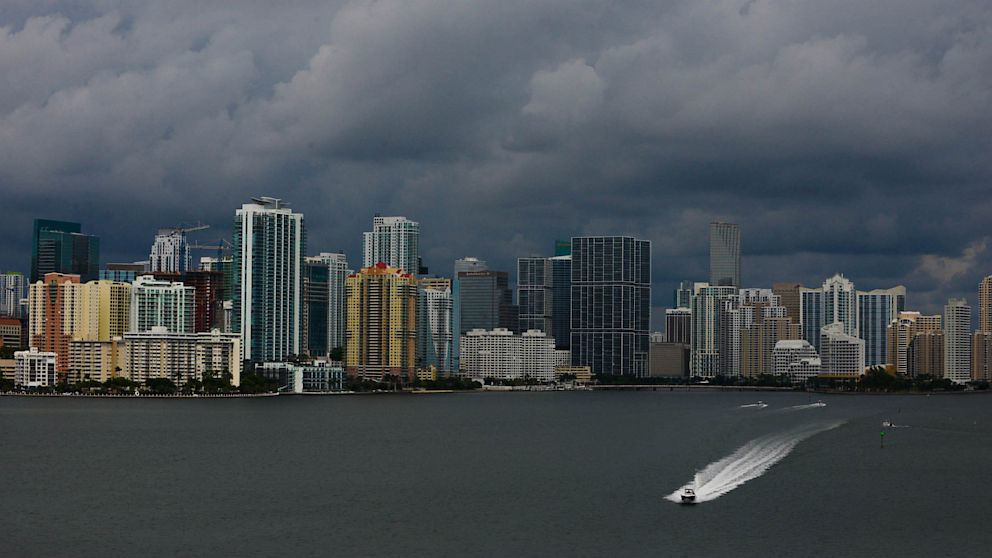7 Basic Ways to Prepare Your Home, Business for a Storm
Here are 7 ways to prepare your home and business for a storm and flooding.

Oct. 4, 2013 — -- intro:
As officials in the Louisiana island of Grand Isle call for a mandatory evacuation due to Tropical Storm Karen, homeowners near the Gulf of Mexico should be taking precautionary measures as Karen may become the first named storm to hit the U.S. this quiet hurricane season.
Here are some basic steps to try to protect your household and minimize property damage and financial costs.
quicklist:title: Prepare for Phone Interruptionstext: In the case of any major disaster, phone lines could be jammed and people can lose Internet access after electricity is shut down.
Cell phone users can usually text more successfully than call when a network experiences high volume, like during 9/11, because texting uses less data, says Paul Reynolds, electronics editor with Consumer Reports. But those not familiar with texting may need a tutorial. He said a full QWERTY keyboard makes it easy to text versus a numeric keypad on basic cellphones, which can be more cumbersome and harder to learn.
Business owners to have a communication plan, in case phone and texting is unavailable, says Judy Spry, partner in the insurance claims services practice at BDO Consulting. Have contact information and emergency disaster plans handy.
quicklist:title: Create a Disaster Plan, or Test Your Current Onetext: It is important to create a plan for your family to act quickly in the event of an evacuation, says Julie Rochman, president and CEO of the Insurance Institute for Business and Home Safety has said.
Homeowners should consider which valuable objects they will take with them in case of evacuation.
Spry said a disaster plan should clearly communicate pre- and post-hurricane procedures to any relevant people. For families, that includes near and far relatives and friends. Business owners should communicate disaster plans to employees, customers, vendors, and business partners.
Spry said the safety of people, such as employees and customers, should be the first procedure. The plan should next address how to protect your property and business records, and communication with business partners or clients.
The Federal Emergency Management Agency, or FEMA, also has a dedicated website for hurricane preparedness.
quicklist:title: Check Insurance Policiestext:
Homeowner's policies usually do not cover loss due to flooding, but coverage can be purchased from the federal government. Homeowners can ask their agents about the details or contact the National Flood Insurance Program at 1-800-427-4661.
It is important to review your homeowners policy with your agent or broker so you understand the amount you will receive in the event of a covered loss, and whether it will be adequate to rebuild your home, Scott Spencer, senior vice president of Chubb Personal Insurance, said.
He also advised homeowners to know the amount of a deductible and any special provisions in the policy such as wind exclusions. And include your insurance company's toll free claim number and insurance agent's phone number in your emergency evacuation kit.
quicklist:title: Check Your House for Vulnerabilitiestext:
Homeowners to check for potential problem areas of a house in case of a disaster. Rochman with the Insurance Institute for Business and Home Safety advises homeowners to walk around outside and check for old or damaged trees and items like lawn furniture that could be moved with wind.
You should also make sure the roof does not have holes or is missing shingles. To safeguard against strong winds, you may have to nail down new shingles.
Some fix-it tasks can be completed over a weekend, such as reinforcing a garage door, vents and a gable, or triangular, roof, so water does not leak in. Those living in low lying areas where coastal storms surge should move electronic devices off the ground floor and put heavy furniture on blocks to prevent damage from flooding. Also, homeowners should roll up rugs.
Homeowners should notify the lender or bank that has taken ownership of the foreclosed property, as well as town officials, of concerns regarding foreclosed homes.
quicklist:title: Take Video or Photos for a Home Inventorytext: For insurance purposes and for your own personal keepsake in case of a disaster, Rochman said you should have a home inventory or a photographic record.
"Walk around with a video or still camera and take pictures of everything," she said. While you are doing that, you can consider which few items to bring in case of an evacuation.
quicklist: title: Consider Important Suppliestext: FEMA recommends preparing at least one gallon of water per person per day.
A normally active person needs at least one-half gallon of water daily just for drinking, but sometimes children, nursing mothers, the sick and people in hot temperatures may require more, according to FEMA. Other items to consider are food items, an appropriate supply of medication, traditional and special batteries for items like cell phones.
quicklist:title: Shelter Considerations: Petstext: Rochman said that during Hurricane Katrina, there were some people who did not evacuate as recommended because they had pets, or they did not know what to do with their pets. Wherever you go, such as shelters or hotels, make sure pets are accepted.




